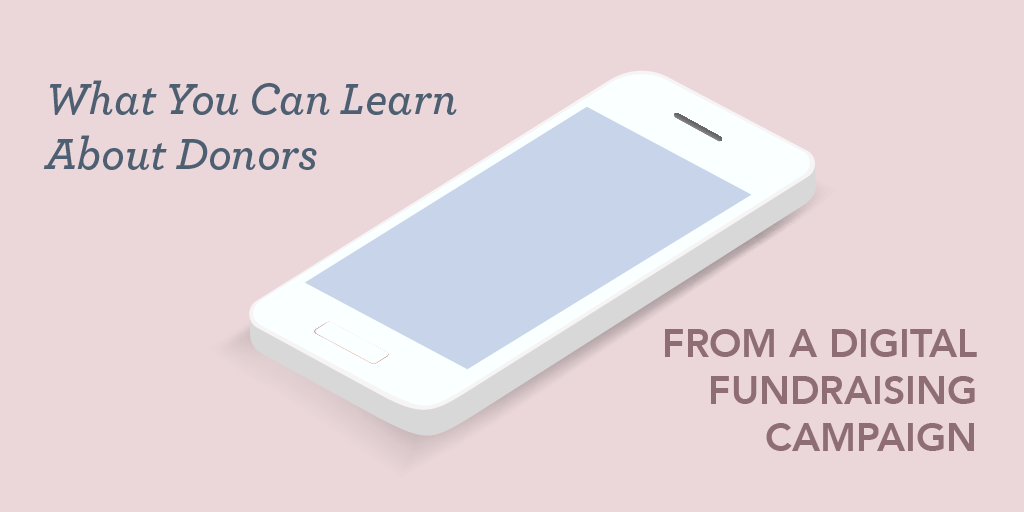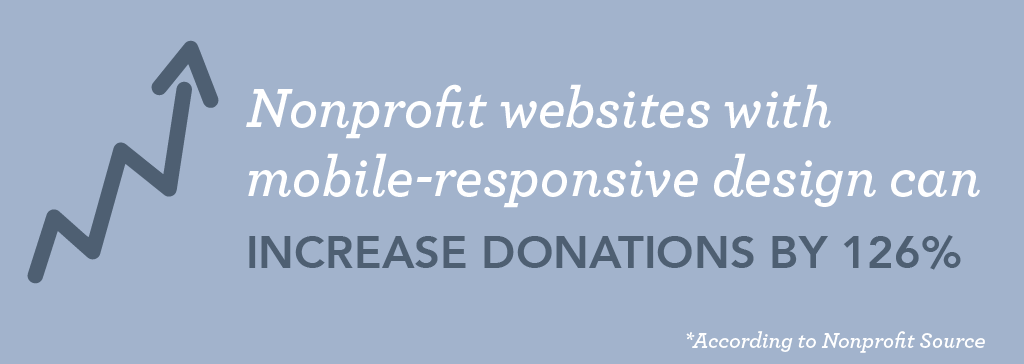Check out this awesome article from our friend Mike at Action Graphics! They put loads of emphasis on making nonprofits’ communications more simple, and Mike’s pulled together some great information that will help you build better relationships with donors, improve they way you and your supporters engage with each other, and turn improved communications into fundraising dollars.
What You can Learn About Donors from a Digital Fundraising Campaign
And How You Can Use it to Craft More Relevant and Effective Communications
Today’s fundraisers know that delivering a personal experience backed by data is essential for building relationships and raising more money. Each appeal, no matter the medium, must feel relevant and speak to each donor’s unique motivations for giving.
Print appeals will always have their place in fundraising campaigns, but as more fundraisers take advantage of an integrated approach, many organizations are looking for ways to get more out of their digital fundraising efforts. However, 66 percent of charities are worried they are missing out on opportunities for digital fundraising, according to Nonprofit Source.
Even if your nonprofit is already taking advantage of mobile giving trends like peer-to-peer fundraising and text-to-give campaigns, there are several steps you can take to really go the extra mile. Understanding how to leverage your mobile donor data is the key.
Thinking with Data
If you’ve run a peer-to-peer or text-to-give campaign in the past, you should be familiar with setting keywords to direct donors to a designated online giving page. However, many nonprofits don’t realize that these keywords can do much more than simply navigate a user to the right page.
Planning a strategy with the right keywords can help you learn more about your donors and their preferences. The best fundraising communications deliver a personal experience for the recipient. Thinking deeper about your keyword strategy can help you reach donors with a message that inspires giving.
Using Keywords Strategically
Sure, you will learn a little bit about new donors from the information they enter on the giving page itself. But using the right keywords can tell you more about what specific programs or initiatives donors are interested in and much more.
The process for most text message donations begins when the user texts a specific keyword to a designated number. The donor is then prompted with a reply to specify the amount they want to give and to enter any additional keywords provided by the organization. This is a great opportunity for nonprofits. You want to use that text message to ask them how much they want to give and what their contribution should be used for.
How Does This Work?
Let’s say your nonprofit works in an inner city to provide mentorship and educational opportunities for at risk youth. Your efforts are focused on three main areas: building the foundation of a STEM education for students, providing employment opportunities and job training for young adults, and raising awareness of educational resources already available for the community.
Wouldn’t it be helpful to know which of these initiatives appealed to specific donors? Believe it or not, this information is already at your fingertips. When donors initiate the giving process through text, you will provide them with one or two keywords to choose from. These keywords specify what donation page they are directed to and how their money will be used. So, the organization in the example above could ask donors to use the keywords EDUCATION, AWARENESS, or EMPLOYMENT.
A donor who uses the EDUCATION keyword knows that their gift will help open doors for young students through educational opportunities. The benefits of this data-driven strategy are two-fold. First, donors want to know their gift helped make a difference, so being specific and demonstrating impact will encourage them to give again.
But second, and most importantly, this strategy helps set your organization up for long-term fundraising success. Your next appeal to this donor should focus on the education initiative, since you know that this specific cause is what motivated the donor to give. Using the right keywords can help you learn more about what why your donors give so you can develop more powerful and relevant communications aligned with their values in the future.
What Else Can I Learn?
You can apply this keyword strategy to learn a number of things about your donors during a campaign. Instead of using certain initiatives as keywords, you can use donor location to zero in on areas where you have the most support. This can be broad, like the state a donor lives in, or more specific depending on your needs.
Another option is to ask donors to check a box once they arrive on the donation page to set up a recurring gift. This strategy can provide information for your development staff as they determine where to focus their donor retention efforts to encourage repeat giving.
Running a text-to-give campaign can also provide you some insight into your donor base’s preferred methods of communication. In the long run, this can save your organization a good chunk of change by helping you determine the best way to communicate with specific donors.
Consider using your online donation page to ask donors if they would like to receive future appeals digitally. You can save on printing and postage costs if you refrain from sending a print appeal to donors who opt in for digital only.
Drawing in Mobile Users
However, these strategies can’t help you if you don’t have the proper tools in place to make it easy for donors to give digitally. Ensuring donors can access you giving page easily on their smartphone will help you make the most of your fundraising efforts. In fact, organizations that incorporate mobile-responsive design to their websites can increase their donations by an average of 126 percent. Designing your website with the mobile user’s experience in mind is crucial for successful digital fundraising.
But it is equally as important to consider how mobile users are finding their way to your site. 54 percent of nonprofit emails and 58 percent of interactions with nonprofits on social media happen on a mobile device. You need to think about your social media and email messages from a mobile-first mindset.
When someone scrolls through their Facebook, X, or Instagram feed, they glance over far more posts than they engage with. This is especially true for mobile users, who can breeze by several posts with a single flick of the thumb.
The most effective way to do this is through eye-catching visuals, including pictures, graphics, and short videos. The visual elements of your post should be strong enough to draw in mobile users on their own. You shouldn’t include long walls of text in your posts. Keep the text short and sweet, include a link to the mobile version of your site, and let the visual elements do the heavy lifting.
A Quick Fix
We’re not going to sugar coat it, if you have never thought about how mobile users engage with your organization you have a lot of work ahead of you! However, there are some small things that you can change right away that can have a big impact on your mobile fundraising efforts.
For example, adding an express checkout or donation sidebar on your homepage can increase mobile giving totals by 55 percent. You can make the giving process even easier if you use data you already have to pre-fill donation forms with information like a donor’s name or email address.
Are you having trouble, or are not equipped technically to quickly process mobile donations? Consider using a third-party service, like PayPal, to process online gifts. These services make it easier for donors to give and should reduce the number of users who visit your donation page but leave before making a gift. Since many people have a PayPal account already, they may not even have to enter their credit card information directly into your site to complete the donation!
Another easy way to encourage donors to find and move through your website quickly and donate is to reduce the amount of time they spend waiting for a page to load. There are several factors that affect the speed of your website. But simply compressing or reducing the size of images on your mobile site and emails can have a significant impact! There are a number of free tools online, like smush.it, to help you reduce the size of your images without sacrificing quality!
Mobile Is Mandatory
With each passing day, smartphones become more integrated and essential in our lives. Roughly 80 percent of adults in the United States own a smartphone.
Text-to-give, peer-to-peer fundraising, and other digital strategies don’t just help you raise money here and now. Planning these campaigns from a data-driven perspective will help your organization learn more about your donors, their giving preferences, and their motivations. In turn, your nonprofit gains more loyal and engaged supporters who see eye-to-eye with your organization’s mission. In the long run, this strategy will net you more fundraising dollars at significantly less cost.
Consider that about a quarter of donors currently make gifts from their mobile device and that mobile giving rose by 205 percent between 2016 and 2017. This growth is expected to continue year after year. Can your organization really afford not to think from a mobile mindset?
About Action Graphics:
Action Graphics exists to increase the value and effectiveness of our clients’ fundraising and related communications. We work with nonprofits and educational institutions to provide integrated strategies and execution to help them meet their goals. Our mission-centric approach has helped hundreds of organizations amplify their messaging and communicate more powerfully to deliver results and increase engagement. Click here to learn more about us!





